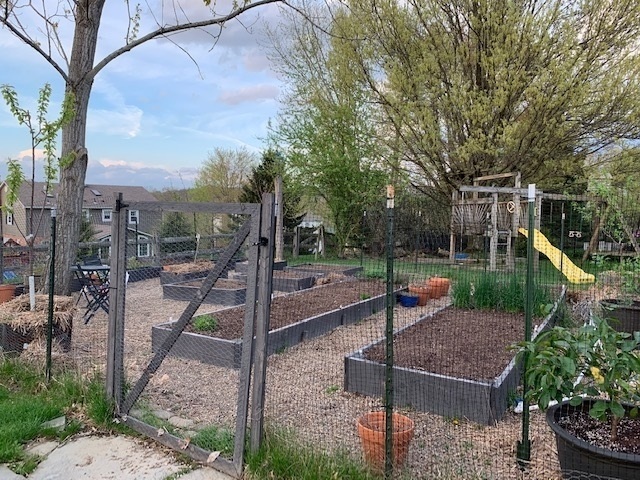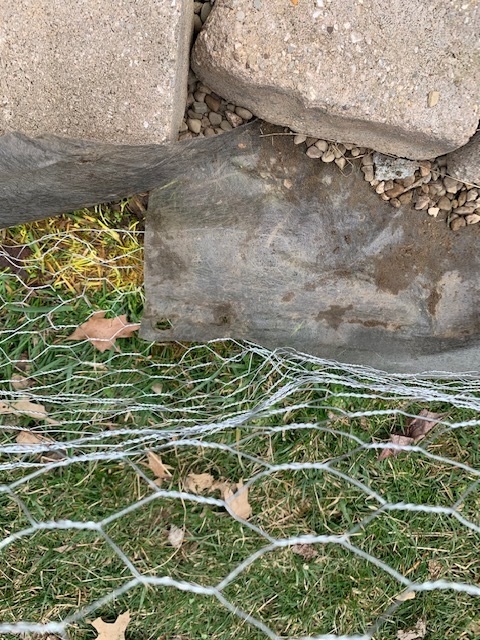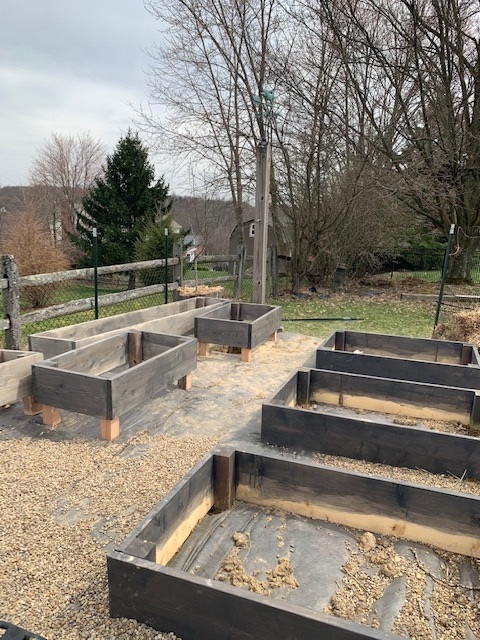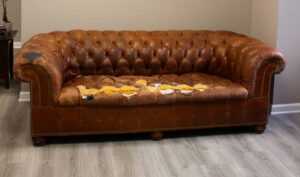It’s Spring! I get excited every spring to start getting plants into my veggie garden. This year I’ve decided to take on a garden expansion. I wanted a few extra beds for veggies, but also wanted to expand the fruit that I’m growing.
I’ve received the same questions multiple times from new gardeners this year while expanding the garden. “What type of fencing do you use and how do you keep the deer out?” I usually answer “the deer are a problem, but the bunnies are a bigger problem”. The other question I get a lot is, “How do you build your raised beds?” So as my first blog post, I’ve decided to share the details of our garden infrastructure.
Fencing out the Deer: I need to preface this by saying, my fence is probably not completely deer proof. If they really wanted to get in, they could. I think the layout of the garden and the height of the fence are more of a deterrent than anything. Deer aren’t dumb, and if they have readily available food that they can reach without a problem, they won’t jump a 5 ft fence to go for an unknown food source. (Or, I’ve just been lucky in the past.) I use 5 foot fencing with metal posts in order to deter them from bounding into my garden. I’ve used a black mesh fencing the past couple years, but am starting to upgrade to metal fencing. See the photo below:

Bunny Proofing: The bunnies present a challenge to any gardener. They will wiggle through, borough under and get in to the garden by any means necessary. In order to keep the bunnies out I put chicken wire at the bottom of my garden fence, because they can’t wiggle through the small holes of the chicken wire. In order to keep them from burrowing under the fence, I laid the chicken wire 6 inches into the garden. I then covered and staked the chicken wire under landscaping fabric. I then covered the landscaping fabric with pebble walkways. The image below shows the chicken wire under landscape fabric. I also edge the garden with stones (visible in the picture below).

So, now we are on to the construction of our raised beds. My lovely husband builds them for me. The sideboards of the beds are screwed into 4″x 4″ posts that we dig into the ground. Using the 4″ x 4″ posts makes the boxes very sturdy and digging the feet into the ground prevents the boxes from moving or shifting around. The picture below shows the beds both after being dug in and some prior to being dug into the ground.

There’s many ways to go about both fencing and raised beds. This is just what we came up with. Let me know what you do that works and doesn’t work.
Happy Spring, Happy Gardening!










